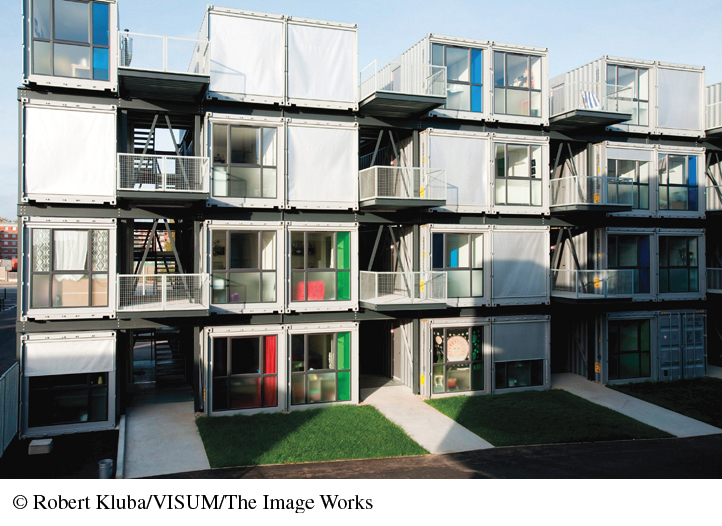Build Your Critical Thinking Skills
As noted in the chapter on building a foundation for success, critical thinking is the ability to consider information in a thoughtful way, understand how to think logically and rationally, and apply those methods of thinking in your classes and your life.2 You use critical thinking in all kinds of situations: For instance, when you’re making the tough decision of figuring out how many college loans you should apply for. You also use it to assess whether information — such as a candidate’s political position, an article you’ve read online, or claims made in a product advertisement — makes sense or is trustworthy.
Critical Thinking: The ability to consider information in a thoughtful way, understand how to think logically and rationally, and apply those methods of thinking in your classes and your life.
In this section we’ll look at key elements of critical thinking, including the skills involved and tips for mastering those skills.

The Higher-Level Thinking Skills behind Critical Thinking
Critical thinking is made up of a collection of skills that help you assess information, answer questions, and make decisions. These skills are also known as higher-level thinking skills because they require you to think in sophisticated ways, such as evaluating and synthesizing information. Yet all higher-level thinking is based on lower-level thinking skills, such as remembering facts, dates, and definitions or describing an object or idea. One way to think of lower- and higher-level thinking is to consider the six questions journalists typically ask: Who?, What?, Where?, and When? are lower-level questions because they focus on basic facts and information, while How? and Why? are higher-level questions because they require you to connect and work with those basic facts.
ACTIVITY: In groups, ask students to discuss scenarios in their own lives when they used each of the skills listed in Table 2.1. How did they feel about the outcome of each scenario? What could they do in the future to focus more on these skills?
Table 2.1 shows a few examples of higher-level thinking skills. As you read through the rest of this chapter and the book, you’ll use these and other critical thinking skills to make smart decisions about your coursework, life, and career.
ACTIVITY: Ask students to select a recent article from a credible newspaper and use at least three of the five critical thinking skills listed in Table 2.1 to critique the article. Students may do this in a written response or present their critique in class.
| Skill | Definition | Examples |
|---|---|---|
| Comparing and contrasting | Identifying similarities and differences between two or more concepts |
|
| Deducing | Arriving at a conclusion using reason and logic |
|
| Synthesizing | Combining facts into a larger understanding of a concept |
|
| Evaluating | Judging the authenticity or soundness of an argument |
|
| Prioritizing | Determining the order of importance of tasks |
|
How to Use Your Higher-Level Thinking Skills
Now that you have a sense of the types of higher-level thinking skills involved in critical thinking, let’s explore how to use them. The next time you have a decision to make, a question to answer, or an argument to consider, follow these guidelines to reach careful conclusions.
ACTIVITY: Ask students to evaluate the credibility of popular Web sites such as Buzzfeed.com, HuffingtonPost.com, and Wikipedia.com. Then provide specific examples of where students may go to find more credible information (such as libraries and online research databases).
Gather and Evaluate Information. To think critically, you need information. The kind of information you need depends on what you’re trying to accomplish. If you want to choose a major, you’ll need information about your interests, values, strengths, and possible career goals. If you’re writing a term paper, you’ll need information found in books, your class notes, or readings on reserve in the library.
WRITING PROMPT: Have students reflect on what it means to be open-minded. How would they handle a situation similar to Christopher’s in their own lives? Ask them to write about a time when they benefited from being open-minded.
Having good information can steer you in the right direction and help you avoid mistakes. Imagine you’re a doctor treating a sick patient. If you diagnose the person’s medical problem using information that isn’t accurate, you could end up treating him for, say, an earache when he really has the flu. That’s why you have to evaluate how reliable your information is. If a source is questionable or hard to assess — maybe you overheard something from a friend’s cousin’s dog walker — you’ll need another source to back up the claims before you can trust the information. Remember Christopher? His sources — TV shows and Web sites — left out important facts and even distorted information, so they weren’t very reliable. Better sources lead to better choices.
WRITING PROMPT: As an alternative, have students reflect on a time when they were not open-minded. What made them resistant to considering alternative perspectives? How did this situation turn out? How might they encourage themselves to be more open-minded in future situations?
Keep an Open Mind. Critical thinking involves keeping an open mind. To do this, be open to new possibilities presented by information you gather. Think about old information in new ways, and consider information from different angles. For example, if Christopher approaches his career decision with an open mind, he might identify possibilities other than crime-scene investigation that interest him and provide the benefits he’s looking for.

Apply What You’ve Learned. To be an expert critical thinker, you need to do something with the information you have — either disregard it because it didn’t pass your evaluation, or apply it in your life and work. For instance, use new knowledge about your strengths to set a goal for yourself, or use information you gained in a class to complete an assignment correctly.
Another way to apply information is to connect something you learned in the past to what you’re learning now. What do you already know about mathematics that you can use to learn college algebra? If you’ve worked on a construction crew, how can you apply knowledge gained from that experience in your architectural design class?
Review Your Outcomes. Reflection is part of critical thinking, so make time to review the outcomes of your decisions and actions. Ask yourself whether your decisions and actions are built on strong critical thinking — or whether you need to improve your thinking process. For example, if your instructors have been skeptical about arguments you’ve made in several writing assignments, consider whether you need to improve your ability to evaluate your sources’ reliability. View such experiences as opportunities for positive change, and get help if you need it to strengthen your critical thinking skills.
